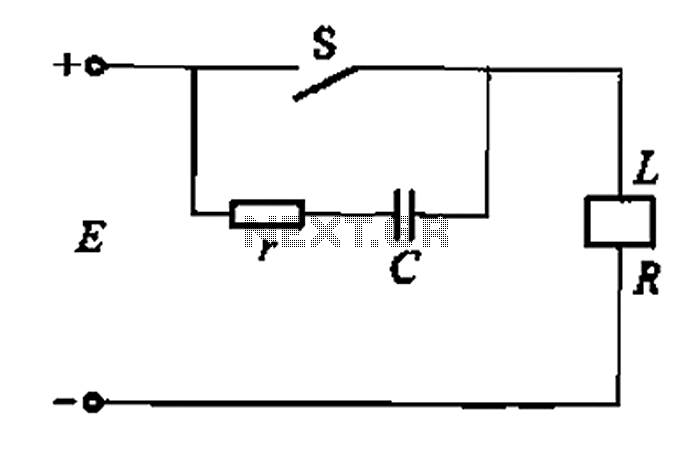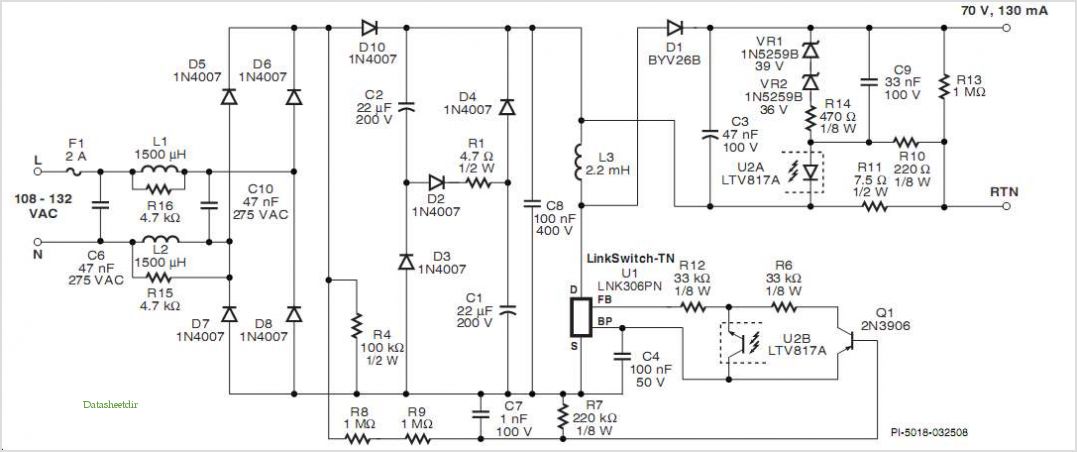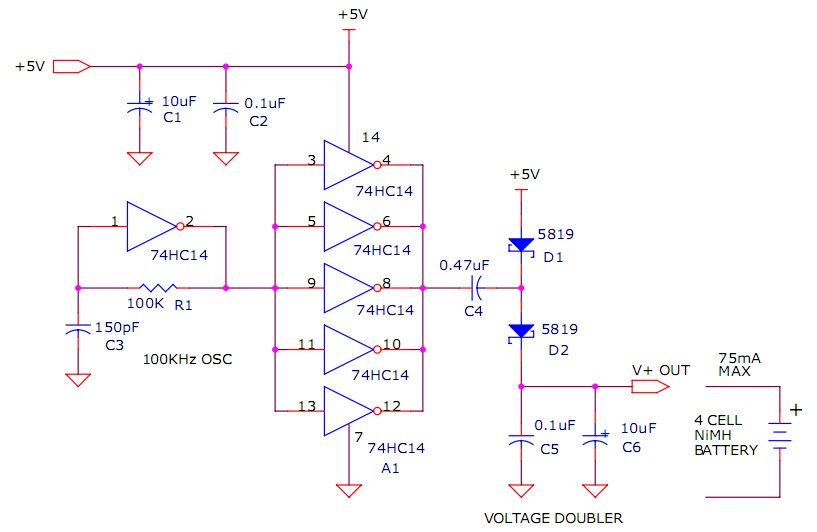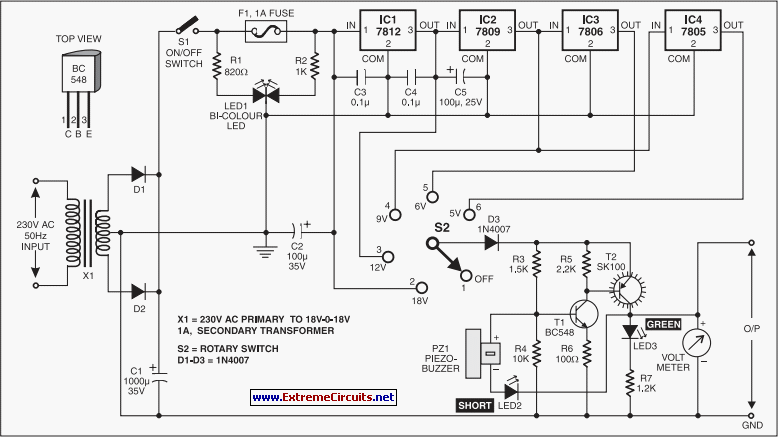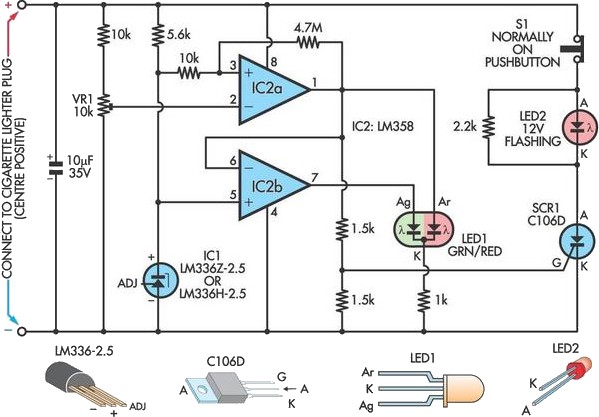
Circuit Enables Single NiMH Cell to Simulate a Lithium Battery

Lithium-based (Li+) batteries are increasingly used in portable devices due to their favorable characteristics. However, they are often in limited supply, leading to long lead times unless a preferred-customer status is established with manufacturers. Consequently, a backup alternative to Li+ batteries is desirable, particularly for smaller companies. This note describes a circuit that enables the use of a nickel-metal hydride (NiMH) cell in a circuit designed for a Li+ battery, providing comparable performance, size, and cost to a Li+ battery. The circuit interfaces a NiMH battery with a lithium-optimized circuit by mimicking the battery's terminal voltage, which decreases as the battery discharges. Li+ batteries have a nominal terminal voltage of approximately 3.6V, while NiMH batteries have a nominal voltage of about 1.2V. A straightforward approach involves using an efficient step-up converter to equal the battery voltage multiplied by a factor of 3 (3.6V/1.2V = 3). However, allowing the circuit to run continuously during shutdown leads to unnecessary power consumption. The equivalent leakage of the NiMH circuit can reach as high as 200 µA during shutdown, which is unacceptable. Instead, a power-control capability is required during shutdown. Rather than maintaining three times the NiMH voltage during shutdown, the circuit can operate in burst mode, activating the step-up converter only when the output drops below a specified threshold. When the output reaches the upper threshold, the step-up converter shuts down, allowing the output capacitor to discharge through the output load and the NiMH circuit, resulting in a sawtooth wave output. If the battery voltage falls below a certain limit, the circuit remains inactive to prevent battery depletion. The circuit described implements these concepts by providing an interface between a NiMH battery and a lithium-optimized power-management circuit. The MODE input controls the circuit operation; a HIGH signal generates the sawtooth waveform, while a LOW signal maintains 3 times the battery voltage. An integrator-connected operational amplifier (U1) multiplies the battery voltage at its feedback node to produce an output three times that voltage. A large integrator time constant is necessary to avoid interactions with U1's internal error comparator and to filter out noise. In low-power mode, a microprocessor-supervisor IC (U2) monitors the output voltage and controls U1. The resistor string associated with U2 sets approximate voltage thresholds of 2.4V and 4V. The step-up converter must be shut down when the battery voltage drops below a threshold, typically 0.9V. This shutdown is managed by the converter's internal comparator, while the Tiny Logic network selects the appropriate operating mode based on the state of the MODE control input, the ramp threshold detector (U2), and U1's internal battery comparator. To ensure startup from 1.0V when the output is at 0V, the logic network must be directly powered by the battery. The logic family utilized (ULP) operates down to 0.9V; below this voltage, the battery is close to depletion. The sawtooth duty cycle of this circuit is approximately 10%. It is important to note that the circuit has a potential lockup state; when operating in sawtooth mode, U2's upper threshold must always be lower than U1's maximum output to ensure U2 can deactivate U1. U1's maximum output is determined by the R9-R10 resistor string at its feedback node. Since the op-amp output is at high impedance in low-power mode, it does not draw current from this node. This circuit does not incorporate an interface for charging Li+ batteries; this function can be achieved with a p-channel MOSFET in series with the charger and the battery, along with an operational amplifier to regulate the charger side of the MOSFET to maintain three times the battery voltage.
The described circuit effectively provides a solution for utilizing NiMH cells in applications designed for Li+ batteries, addressing both performance and efficiency. The implementation of a burst mode operation minimizes power consumption during inactive periods, while the careful design of feedback and control mechanisms ensures reliable operation across varying voltage levels. The use of an integrator and the configuration of a microprocessor supervisor facilitate precise voltage monitoring and control, enhancing the circuit's adaptability to different load conditions. The overall design highlights the importance of balancing performance requirements with power management, making it suitable for applications where battery life is critical. The addition of a charging interface for Li+ batteries could further enhance the circuit's versatility, enabling seamless integration into existing systems.Lithium-based (Li+) batteries are becoming common in portable equipment. They have desirable characteristics, but they are often in short supply. Lead times can be long unless you have a preferred-customer status with the battery manufacturer. A backup alternative to Li+ is therefore desirable, especially for smaller companies. This note describes a circuit that allows a nickel-metal hydride (NiMH) cell to be used in a circuit designed for a Li+ battery. It provides the same performance, size, and cost as a Li+ battery. A circuit that interfaces a NiMH battery with a lithium-optimized circuit should mimic the battery`s terminal voltage, which declines as the battery discharges.
The nominal terminal voltage for Li+ batteries (3. 6V) is about three times that of NiMH batteries (1. 2V). As a simple approach, therefore, you can force the output of an efficent step-up converter to equal battery voltage times 3: 6V/1. 2V = 3. Allowing the circuit to run constantly during shutdown, however, consumes unnecessary power. The NiMH circuit`s equivalent leakage (its quiescent current) can be as a high as 200 µA during shutdown, which is unacceptable.
In fact, only a power-control capability is needed during shutdown. Instead of maintaining 3x the NiMH voltage while in shutdown, you can run the proposed circuit in burst mode, which activates the step-up converter only when the circuit output drops below a defined threshold. When the output reaches the upper threshold, the step-up shuts down, allowing the output capacitor to discharge through the output load plus the NiMH circuit.
Thus, the output voltage forms a sawtooth wave. If battery voltage falls below a lower limit, however, the circuit remains deactivated to protect the battery from depletion. The circuit of Figure 1 implements the above ideas by providing an interface between a NiMH battery and a lithium-optimized power-management circuit.
The MODE input controls the circuit; HIGH gives the sawtooth, and LOW gives 3*VBATT. The integrator-connected op amp multiplies the battery voltage by driving U1`s feedback node to produce an output three times that voltage (Figure 2). A large integrator time constant is necessary both to avoid interaction with U1`s internal error comparator, and to provide noise filtering.
In low-power mode, a microprocessor-supervisor IC (U2) monitors the output voltage and controls U1. The resistor string associated with U2 sets approximate 2. 4V and 4V thresholds for that device. Finally, the step-up converter must always be shut down when battery voltage drops below a threshold, which is usually 0. 9V. That shutdown is accomplished by the converter`s own internal comparator; the Tiny Logic network selects the correct operating mode according to the state of the MODE control input, the ramp threshold detector (U2), and U1`s internal battery comparator.
To ensure startup from 1. 0V when the output is 0V, the logic network must be supplied directly from the battery. The logic family shown (ULP) functions down to 0. 9V; below 0. 9V, the battery is nearing depletion. Using the components as shown, the sawtooth duty cycle of this circuit is 10% (Figure 3). Note that the circuit has a potential lockup state. When running in sawtooth mode, U2`s upper threshold must always be less than U1`s maximum output. Otherwise, U2 does not shut down U1. U1`s maximum output is set by the R9-R10 resistor string at its FB node. (Because the op-amp output is at high impedance in low-power mode, it does not pull current from the node). This proposed circuit does not include an interface for Li+ battery charging. That function can be implemented with a p-channel MOSFET in series with the charger and the battery, plus the addition of an op amp to servo the charger side of the MOSFET to 3*VBATT.
🔗 External reference
The described circuit effectively provides a solution for utilizing NiMH cells in applications designed for Li+ batteries, addressing both performance and efficiency. The implementation of a burst mode operation minimizes power consumption during inactive periods, while the careful design of feedback and control mechanisms ensures reliable operation across varying voltage levels. The use of an integrator and the configuration of a microprocessor supervisor facilitate precise voltage monitoring and control, enhancing the circuit's adaptability to different load conditions. The overall design highlights the importance of balancing performance requirements with power management, making it suitable for applications where battery life is critical. The addition of a charging interface for Li+ batteries could further enhance the circuit's versatility, enabling seamless integration into existing systems.Lithium-based (Li+) batteries are becoming common in portable equipment. They have desirable characteristics, but they are often in short supply. Lead times can be long unless you have a preferred-customer status with the battery manufacturer. A backup alternative to Li+ is therefore desirable, especially for smaller companies. This note describes a circuit that allows a nickel-metal hydride (NiMH) cell to be used in a circuit designed for a Li+ battery. It provides the same performance, size, and cost as a Li+ battery. A circuit that interfaces a NiMH battery with a lithium-optimized circuit should mimic the battery`s terminal voltage, which declines as the battery discharges.
The nominal terminal voltage for Li+ batteries (3. 6V) is about three times that of NiMH batteries (1. 2V). As a simple approach, therefore, you can force the output of an efficent step-up converter to equal battery voltage times 3: 6V/1. 2V = 3. Allowing the circuit to run constantly during shutdown, however, consumes unnecessary power. The NiMH circuit`s equivalent leakage (its quiescent current) can be as a high as 200 µA during shutdown, which is unacceptable.
In fact, only a power-control capability is needed during shutdown. Instead of maintaining 3x the NiMH voltage while in shutdown, you can run the proposed circuit in burst mode, which activates the step-up converter only when the circuit output drops below a defined threshold. When the output reaches the upper threshold, the step-up shuts down, allowing the output capacitor to discharge through the output load plus the NiMH circuit.
Thus, the output voltage forms a sawtooth wave. If battery voltage falls below a lower limit, however, the circuit remains deactivated to protect the battery from depletion. The circuit of Figure 1 implements the above ideas by providing an interface between a NiMH battery and a lithium-optimized power-management circuit.
The MODE input controls the circuit; HIGH gives the sawtooth, and LOW gives 3*VBATT. The integrator-connected op amp multiplies the battery voltage by driving U1`s feedback node to produce an output three times that voltage (Figure 2). A large integrator time constant is necessary both to avoid interaction with U1`s internal error comparator, and to provide noise filtering.
In low-power mode, a microprocessor-supervisor IC (U2) monitors the output voltage and controls U1. The resistor string associated with U2 sets approximate 2. 4V and 4V thresholds for that device. Finally, the step-up converter must always be shut down when battery voltage drops below a threshold, which is usually 0. 9V. That shutdown is accomplished by the converter`s own internal comparator; the Tiny Logic network selects the correct operating mode according to the state of the MODE control input, the ramp threshold detector (U2), and U1`s internal battery comparator.
To ensure startup from 1. 0V when the output is 0V, the logic network must be supplied directly from the battery. The logic family shown (ULP) functions down to 0. 9V; below 0. 9V, the battery is nearing depletion. Using the components as shown, the sawtooth duty cycle of this circuit is 10% (Figure 3). Note that the circuit has a potential lockup state. When running in sawtooth mode, U2`s upper threshold must always be less than U1`s maximum output. Otherwise, U2 does not shut down U1. U1`s maximum output is set by the R9-R10 resistor string at its FB node. (Because the op-amp output is at high impedance in low-power mode, it does not pull current from the node). This proposed circuit does not include an interface for Li+ battery charging. That function can be implemented with a p-channel MOSFET in series with the charger and the battery, plus the addition of an op amp to servo the charger side of the MOSFET to 3*VBATT.
🔗 External reference
Warning: include(partials/cookie-banner.php): Failed to open stream: Permission denied in /var/www/html/nextgr/view-circuit.php on line 713
Warning: include(): Failed opening 'partials/cookie-banner.php' for inclusion (include_path='.:/usr/share/php') in /var/www/html/nextgr/view-circuit.php on line 713
